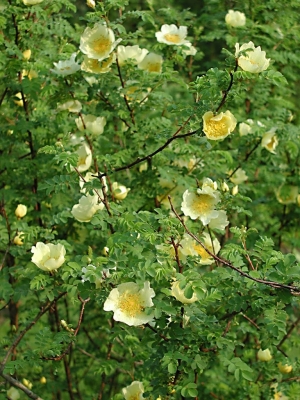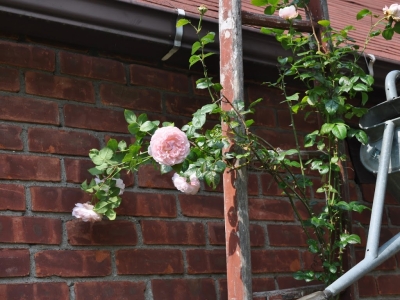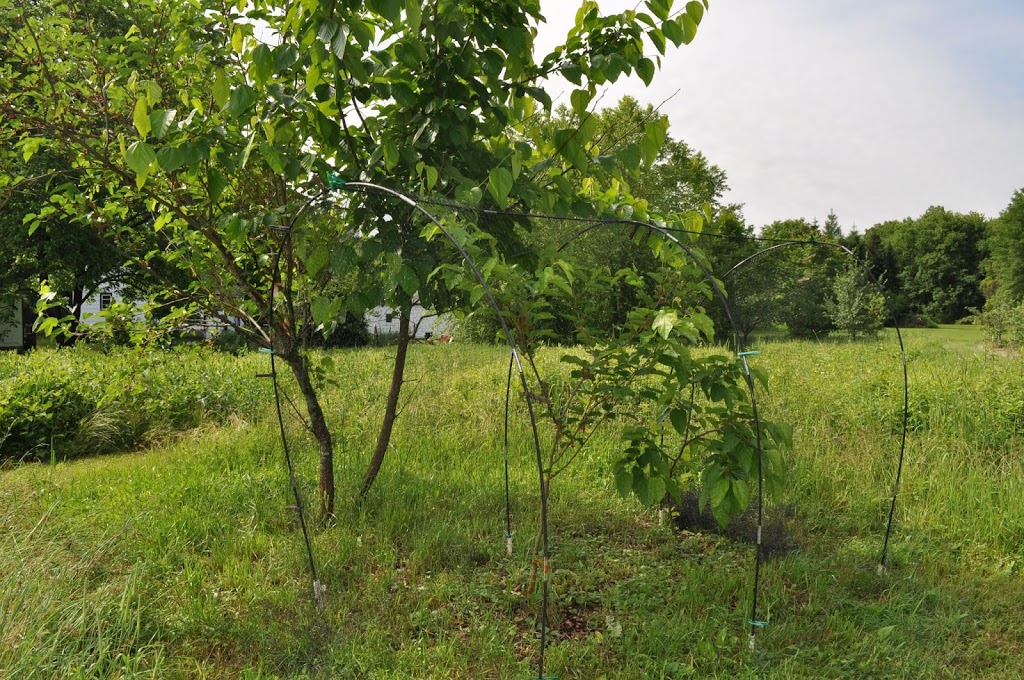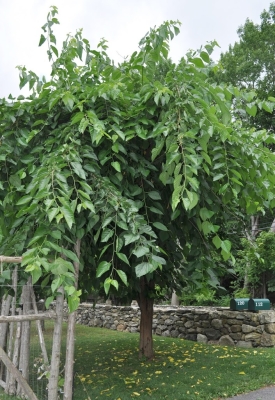WESTWARD HO, FOR FRUIT MEETINGS AND EATINGS
Fruit Nuts, Including Me, Nurseries, & Wild Blueberries
Are there organizations for people who make and eat cheese; build and ride motorcycles; write and read books; grow and savor fruits? All I know is that the answer to the existence of the last-named organization is a rowsing “yes!” I know because I recently returned from Oregon, where I converged with other fruit nuts for the annual meeting of North American Fruit Explorers (www.nafex.org, and nuts, incidentally, are also covered under the organization’s umbrella).
No need to don a pith helmet and traipse off to Borneo to be a fruit explorer. Not that you couldn’t, and be one. No, this fun meeting brought together everyone from backyard growers with a few fruit plants to AN 88-year-old guy who grows over 3,000 varieties of apples. Fruits represented ranged from apples and pears to pawpaws and persimmons and, even more rare, haskaps and gumis. These people, we, realize that there’s a lot more to enjoy in the world of nature’s desserts — fruits, that is — than what you see on display in the supermarket, even farmers’ market.
What appeared to be a roomful of normal people was actually a roomful of fruit nuts, among which I count myself. NAFEX members are as varied as the fruits they grow, with all ages, genders, home towns, and “real jobs” represented. Members can share their trials, tribulations, and rewards of fruit growing (the title of my lecture there), ask questions, and exchange plants in their quarterly publication.
Each year’s annual meeting is at a “fruitful” location. Last week’s meeting took in tours of the USDA germplasm repository, which houses the USDA collection of pears, gooseberries, currants, and bramble fruits, and of research centers on hazelnuts and brambles. All accompanied, of course, by tastings. If you love fruit, grow some . . . and join NAFEX.
Branching Off to Pakistani Mulberries, Delectable Crabs, and More
I branched off (pardon the pun) from the group to visit a few nurseries. First stop was Whitman Farms (www.whitmanfarms.com), at which I made a beeline to Lucille Whitman’s black mulberry (Morus nigra) tree, an offshoot of which I’ve grown for many years. I grow it in a pot because it’s a subtropical species, not cold-hardy here. It’s worth the effort because it is among the most delectable of fruits. It’s hard to imagine that such a small berry can pack such a wallop of rich, sweet-tart flavor, much better than the wild mulberries around here. Lucille also grows a slew of gooseberry and currant varieties, another group of fruits that worthy of wider attention.
From there it was on to Burnt Ridge Nursery (www.burntridgenursery.com), worth visiting also for its panoramic view of the Cascade Mountains, including Mount Saint Helens. I soon realized, driving down the gravel nursery road, that we were passing through a virtual Garden of Eatin’, with apples and pear trees, grapes, and hardy kiwi vines. The forest of large trees turned out to be a nursery owner Michael Dolan’s extensive collection of chestnuts. It was too early in the season to taste any chestnuts but I did get to taste his Black Pakistani mulberry, which had a chewy texture and perhaps even richer flavor than black mulberry. (Black Pakistani is a variety of M. alba, white mulberry.) Another plus for Black Pakistani is that its fruit is two or more inches long. (Lucille Whitman also sells Black Pakistani. Note to myself: Get a Black Pakistani tree to grow in a pot, like a fig.)
Finally, I motored along with Sam Benowitz north to Washington state, to his nursery, Raintree Nursery (www.raintreenursery.com). We were greeted at the nursery entrance by espaliered apple trees, then plum trees whose branches bowed
low from their load of fruit. A Centennial crabapple tree splayed out its small but ripe fruits, which were delicious, especially for a summer apple. Another note to myself: Purchase or make a Centennial crabapple. Pots of lingonberries were lush with their shiny evergreen leaves, the size of mouse ears; persimmons leaves hung languidly from the trees’ branches; and hardy kiwifruit brightened up the scene with silvery variegation, blushed with pink. Alas, these fruits were not yet ripe so for the time being provided only eye candy.
They Call Them Huckleberries
Fruit nuts are a friendly fraternity, ready to share experiences and fruit. Blueberries are among my favorite fruits, and my newfound, northwestern friends were anxious to introduce me to some western blueberry species. First was red huckleberry (V. parvifolium). Not to be an ingrate, but . . . yuk! A very small, very tart, red blueberry. Perhaps the red color threw me off. Next came evergreen huckleberry (V. ovatum), much tastier, and evergreen, but still not holding a candle to our eastern blueberry species.
Finally, though, I had a taste of mountain huckleberry (V. membranaceum). Delicious. Different but as good as our east coast species.
I was given some leafy stems of mountain huckleberry packed for travel with their bases in water tubes and their leaves wrapped in moist tissue. As soon as I got
home I stripped all but the upper two leaves from the stems and inserted their bases into the mix of moist peat and perlite in my makeshift propagator. The propagator sits on the north side of my house, its clear plastic cover maintaining sufficient humidity while letting in sufficient light until the cuttings root — I hope. Blueberry species are not particularly easy to root, although one of the main ingredients needed is patience. I’ll also sow seeds of the few fruits I brought home.
In a few years, my memories of last week’s journey may also live on in my taste buds.

















